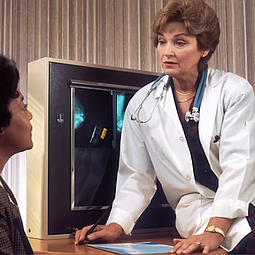Thinking Ahead during Long-Term Care Awareness Month
October 27, 2023 at 9:00 p.m.
November is Long-Term Care Awareness Month, a great time to think ahead about long-term care options.
Though most people know that they need to save enough to cover basic living expenses during retirement, many overlook other common – and costly – expenses like medical and long-term care services. Many retirees require medical services that aren’t covered by Medicare, and some face housing and other long-term care needs they didn’t anticipate when saving for retirement.
There are products and services available to help prepare for and manage these costs, including long-term care insurance, which can protect retirees’ assets by paying for long-term care services and supports in various residential settings, including your own home.
A few planning few tips can help people understand where to start when it comes to thinking about the future. Affording care is among the most critical pieces of planning.
Bea Rector is the assistant secretary for aging and long-term support administration at the Washington State Department of Social and Health Services. She said people typically can't rely on health insurance to cover these costs.
"If somebody doesn't have long-term care insurance," said Rector, "then they're really looking at family and friends maybe helping take care of them or purchasing services out of pocket – or, of course, there's the safety-net program that is Medicaid."
Rector said in-home care or being in a facility outside the home can be costly. She noted that many people receive care from a loved one, which can reduce costs but also comes with burdens on the person providing it.
According to Rector, Washington is the only state in the country with a program that workers pay into in order to fund long-term care, the WA Cares Fund.
The WA Cares Fund will provide access to up to $36,500 in benefits starting in 2026. The amount will be adjusted for inflation going forward. The money is flexible, reported Rector.
"That can be used to pay for a wide variety of things," she said, "from home modifications to wheelchair ramps to personal-care services in the home or even services out of the home, like in an adult family home or assisted living facility."
Rector said it's essential to start planning early.
"Really making sure that the loved ones around you know what you want that to look like and making sure that you've got decision-making supports put in place," said Rector, "things like durable power of attorneys, etc., so that financial or health-care decisions be made by someone that you trust."
The U.S. Dept of Labor suggests these five steps to take now to help you plan:
Track down today’s money. Track down all your workplace retirement plans like 401(k), 403(b), SEP-IRA, SIMPLE IRA and pension accounts. Also, do the same for any non-workplace assets like an IRA, home equity, personal savings and investments.
Calculate future money at retirement and after. Estimate how much the assets could be worth at your retirement. This “guesstimate” will give you some idea of how much income you may have for your retirement years.
Consider future expenses. Look at your expenses today and estimate how they will change during retirement – not just increasing costs for medical expenses, but you might also have some expenses that decrease, like clothing. Then estimate how inflation might affect these expenses between now and retirement.
Compare income and expenses. Compare your estimated retirement income with your estimated expenses and see how they match up. This will show you whether you need to save more for retirement – and if so, how much more.
Make your money last. More saving and less spending will boost your confidence and financial bottom line. And if you’re coming up short, you might consider working longer as circumstances permit or delaying receiving Social Security benefits.
.
This article is adapted from a piece by Eric Tegethoff, courtesy of Newsservice.org, and a piece by Ali Khawar, courtesy U.S. Dept of Labor (Planning for Retirement? Include Long-Term Care Needs | U.S. Department of Labor Blog).





